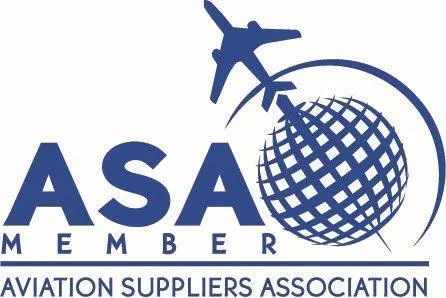
Best Practices for Managing Aircraft Maintenance Records
Effective management of aircraft maintenance records is crucial for ensuring compliance, safety, and operational efficiency in the aviation industry. With the increasing complexity of aircraft systems and regulatory requirements, maintaining accurate and accessible maintenance records has become more challenging. Traditional paper-based systems are often prone to errors, delays, and difficulties in retrieval, which can hinder timely decision-making and audit processes. Adopting best practices for managing these records is essential for modern aviation operations.
Implementing standardized procedures, leveraging digital tools, and fostering a culture of accountability can significantly enhance the management of aircraft maintenance records. Standard practices streamline maintenance workflows, contributing to improved safety outcomes and reduced operational risks.
1. Standardize Documentation Practices
Consistency in documenting maintenance activities is fundamental to ensuring the reliability and traceability of aircraft maintenance records. Standardized formats and procedures facilitate clear communication among maintenance personnel, auditors, and regulatory bodies. Establishing uniform templates for maintenance logs, inspection reports, and service records helps maintain coherence across documentation. Standardized practices reduce the likelihood of omissions or inaccuracies in record-keeping.
Procedural non-compliance remains a significant issue in aviation maintenance, with failure to follow prescribed procedures contributing to numerous safety incidents. Implementing standardized documentation practices mitigates risks by ensuring all maintenance actions are thoroughly recorded and traceable.

Regularly reviewing records helps identify and address compliance gaps through corrective action. Standardization helps organizations maintain accurate and verifiable maintenance histories.
Training maintenance personnel on standardized documentation procedures fosters adherence to best practices. Regular audits and reviews of maintenance records help identify areas for improvement and ensure compliance with established standards. Integrating standardized documentation into digital systems enhances accessibility and facilitates real-time updates. Organizations maintain proactive maintenance management and timely decision-making.
Incorporating standardized documentation practices improves the quality of maintenance records and enhances operational efficiency. Clear and consistent records streamline audits, reduce the risk of regulatory non-compliance, and support effective maintenance planning.
2. Implement Digital Record-Keeping Systems
Transitioning from paper-based to digital maintenance record-keeping systems offers numerous advantages, including improved accuracy, accessibility, and efficiency. Digital systems enable real-time data entry, reducing the risk of transcription errors and ensuring maintenance records remain up-to-date.
Digital records can be easily stored, retrieved, and shared among authorized personnel, facilitating seamless communication and collaboration. Advanced search functionalities allow quick access to specific maintenance histories and compliance documentation.
Adoption of digital maintenance record-keeping systems has led to significant reductions in maintenance delays and operational disruptions. These systems streamline maintenance workflows, enabling faster response times and minimizing aircraft downtime. Organizations that implement digital solutions experience enhanced operational agility. Faster record access improves planning for inspections and maintenance cycles.
Transitioning to digital maintenance record-keeping modernizes operations and improves overall efficiency. Initial implementation may require investment in technology and training, but long-term benefits justify the transition. Digital systems support better maintenance management and broader digital transformation goals. Improved efficiency reduces operational risks and enhances safety compliance.
3. Ensure Compliance with Regulatory Requirements
Adherence to regulatory requirements is a cornerstone of effective aircraft maintenance record management. Regulatory bodies such as the FAA and EASA set stringent guidelines for maintenance documentation to ensure safety and airworthiness. Non-compliance can result in penalties, grounding of aircraft, and damage to an organization's reputation. Staying current with regulatory changes ensures maintenance records meet all legal requirements.
Maintenance-related issues contribute to a significant percentage of aviation accidents, underscoring the importance of compliance. Strict adherence to documentation regulations helps prevent incidents by ensuring all maintenance activities are properly recorded and verifiable. Organizations with strong compliance programs demonstrate operational reliability. Proper documentation enables rapid verification of airworthiness during inspections.
Digital systems designed to comply with regulatory standards streamline documentation processes and reduce risk of errors. A compliance-focused culture reinforces the importance of adhering to regulations across the organization.
Maintaining compliance ensures legal conformity and enhances safety and reliability of aircraft operations. Organizations prioritizing compliance build trust with regulatory bodies, customers, and the public. Strong compliance records contribute to long-term operational success. Maintaining accurate documentation supports both audits and operational decision-making.
4. Facilitate Efficient Audit and Inspection Processes
Efficient audit and inspection processes verify the integrity and completeness of aircraft maintenance records. Well-organized and accessible records enable auditors and inspectors to quickly assess compliance and identify discrepancies. Standardized documentation practices and digital systems streamline audit workflows. Reduced audit duration allows more frequent and thorough inspections, improving overall safety outcomes.
Organizations adopting digital maintenance record-keeping systems experience faster audit turnaround times and improved audit outcomes. Digital records facilitate easy information retrieval, enabling comprehensive reviews without delays. Streamlined audits reduce administrative burden for maintenance teams. Efficient audits help identify operational improvements before external inspections.

Preparing for audits requires maintaining up-to-date records, conducting internal reviews, and addressing identified issues promptly. Regular internal audits help rectify potential compliance gaps before external inspections occur.
Efficient audits contribute to continuous improvement in maintenance practices and regulatory compliance. Organizations excelling in audits demonstrate operational excellence and commitment to high safety standards. Consistent positive audit results enhance reputation and stakeholder confidence. Regular audits reinforce proper documentation and improve decision-making efficiency.
5. Leverage Technology for Better Traceability
Technological advancements offer opportunities to enhance traceability of aircraft maintenance records. Integrating advanced technologies into maintenance record systems improves operational efficiency and reduces maintenance costs. For example, RFID enables automated logging of maintenance activities, reducing manual errors and ensuring accurate records. Technological traceability enhances verification of component histories for inspections. Organizations adopting technology improve responsiveness and maintenance reliability.
Adopting advanced technologies requires investment in infrastructure, training, and system integration. Evaluating compatibility with existing systems ensures seamless implementation.
Leveraging technology for traceability improves accuracy and reliability of maintenance records while positioning organizations as industry leaders. Technological adoption demonstrates commitment to continuous improvement and operational excellence. Digital traceability enables faster audits, inspections, and verification of components. Enhanced technology supports long-term efficiency, safety, and compliance objectives.
Improve Safety and Efficiency Through Effective Aircraft Maintenance Records Management
Effective management of aircraft maintenance records is essential for ensuring safety, compliance, and operational efficiency. Implementing standardized documentation, digital record-keeping, regulatory compliance, efficient audits, and advanced technologies enhances record integrity and accessibility.
ProvenAir provides advanced digital solutions for traceability and lifecycle documentation, enabling faster asset transitions and transparent aviation operations. Leveraging ProvenAir’s platform ensures compliance, streamlines audits, and simplifies management of aircraft maintenance records. Explore ProvenAir to transform your maintenance record management and enhance operational efficiency.


